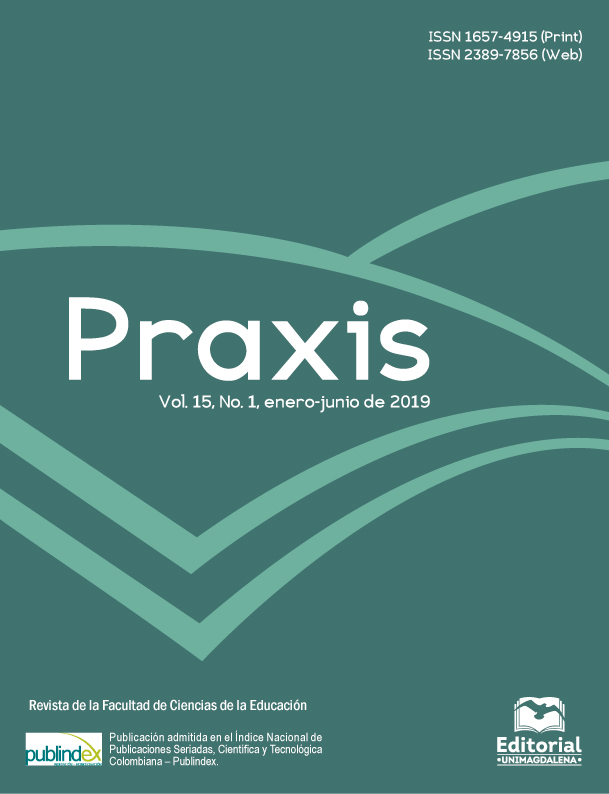E-portafolio: una herramienta para el desarrollo de la práctica reflexiva de profesores en formación
Contenido principal del artículo
Resumen
El desarrollo de competencias para el uso de las TIC y la práctica reflexiva cada día se convierten en aspectos que tensionan a los programas de formación inicial de maestros, especialmente a partir del surgimiento de los estándares para la formación inicial docente en Chile. Desde esta perspectiva, el estudio pretende identificar, con base en las percepciones de los profesores en formación, la relevancia del uso del E-portafolio como una herramienta en el desarrollo de la práctica reflexiva. Está investigación cualitativa adoptó una metodología de estudio de casos instrumental, en donde se seleccionaron dos programas de la facultad de Educación que contaran con estudiantes de cuarto año de la carrera quienes tuvieran una experiencia de dos años trabajando con el portafolio digital. Para generar la información se utilizó la técnica de grupos focales, uno con cada programa de formación seleccionado. A partir del análisis de contenido por categorías preestablecidas, se pudo determinar, siguiendo las percepciones de los estudiantes, que el uso del E-portafolio aparece como una herramienta tecnológica que facilita el tránsito por los diversos niveles de práctica reflexiva siempre y cuando presente una estructura centrada en el proceso de aprendizaje de los profesores en formación.
Descargas
Detalles del artículo

Esta obra está bajo una licencia internacional Creative Commons Atribución-NoComercial-CompartirIgual 4.0.
Citas
Bozu, Z. e Imbernón, F. (2012). El portafolio docente como estrategia formativa innovadora del profesorado novel universitario. Un estudio de casos. Revista de Educación, 358, 238-257.
Cano, E. (2005). El Portafolio del Profesorado Universitario: Un Instrumento para la Evaluación y para el Desarrollo Profesional (1.a edición). Barcelona: Octaedro.
Colén, M. T., Giné, N. e Imbernón, F. (2006). La carpeta de aprendizaje del alumnado universitario. Barcelona: Octaedro.
Collin, S., Karsenti, T. y Komis, V. (2013). Reflective practice in initial teacher training: Critiques and perspectives. Reflective Practice, 14(1), 104-117.
Correa Molina, E. y Gervais, C. (2014). Compétence: pertinence du concept en formation pratique d’enseignants. En M. Tardif y J. F. Desbiens. (Dir.), Les approches par compétences dans les formations à l’enseignement et la profession enseignante: bilan critique et perspectives d’avenir (pp. 145-165). Québec: Presses de l’Université Laval.
Darling, L. F. (2001). Portfolio as practice: The narratives of emerging teachers. Teaching and Teacher Education, 17, 107-121.
Eynon, B. (2009). Making connections: The LaGuardia eportfolio. En D. Cambridge, B. Cambridge y K. Yancey. (Eds.), Electronic portfolios 2.0: Emergent research on implementation and impact (pp. 59-68). Virginia: Stylus Pu.
George, A. L. y Bennett, A. (2005). Case Studies and Theory Development in the Social Sciences. Cambridge: MIT Press.
Jay, J. y Johnson, K. (2002). Capturing complexity: A typology of reflective practice for teacher education. Teaching and Teacher Education, 18, 73-85.
Lane, C. (2007). The power of “e”: Using e-portfolios to build online presentations skills. Innovate, 3(3). Recuperado de http://nsuworks.nova.edu/innovate/vol3/iss3/3
Larrivee, B. (2008). Development of a tool to assess teachers’ levels of reflective practice. Reflective Practice, 9(3), 341-360.
López, M. (2013). Aprendizaje, competencias y TIC. Ciudad de México: Pearson.
López-Fernández, O. y Rodríguez-Illera, J. (2009). Investigating university students’ adaptation to a digital learner course portfolio. Computers & Education, 52(3), 608-616.
Mansvelder-Longayroux, D., Beijaard, D. y Verloop, N. (2007). The portfolio as a tool for stimulating reflection by student teachers. Teaching and Teacher Education, 23(1) 47-62.
MINEDUC. (2005). Informe Comisión sobre Formación Inicial Docente. Santiago de Chile: Dirección de Comunicaciones. Serie Bicentenario. Recuperado de https://www.oei.es/historico/pdfs/info_formacion_inicial_docente_chile.pdf
MINEDUC. (2014a). Estándares orientadores para carreras de Pedagogía en Inglés. Santiago de Chile: Ministerio de Educación.
MINEDUC. (2014b). Estándares orientadores para carreras de Educación Especial. Santiago de Chile: Ministerio de Educación.
Muir-Herzig, R. G. (2004). Technology and its impact in the classroom. Computers & Education, 42, 111-131.
Munby, H. y Russell, T. (1994). The authority of experience in learning to teach: Messages from a physics methods class. Journal of Teacher Education, 45(2), 86-95.
Perrenoud, P. (2004). Desarrollar la práctica reflexiva en el oficio de enseñar. Barcelona: Graó.
Rodríguez Illera, J. L. (2009). Los portafolios digitales como herramientas de evaluación y de planificación personal. En M. Castelló. (Comp.), La evaluación auténtica en Enseñanza Secundaria y universitaria: investigación e innovación (pp. 145-163). Barcelona: Edebé.
Rodrigues, R. y Rodríguez-Illera, J. (2014). El portafolio digital como soporte de la práctica reflexiva en la formación docente. Revista Iberoamericana de educación, 65, 53-74.
Russell, T. (2005). Can reflective practice be taught? Reflective Practice, 6, 199-204.
Schön, D. (1992). La formación de profesionales reflexivos: hacia un nuevo diseño de la enseñanza y el aprendizaje en las profesiones. Barcelona: Paidós.
Silva Quiroz, J. E. y Astudillo Cavieres, A. V. (2012). Inserción de TIC en la formación inicial docente: barreras y oportunidades. Revista Iberoamericana de Educación, 58(4), 1-11. Recuperado de https://rieoei.org/RIE/article/view/1412
Song, K., Scordias, M., Huang, C. y Hoagland, C. (Marzo de 2004). Implementing e-portfolios in a university: An enterprise solution. En R. Ferdig, C. Crawford, R. Carlsen, N. Davis, J. Price, R. Weber & D. Willis (Eds.), Proceedings of SITE 2004-Society for Information Technology & Teacher Education International Conference (pp. 2643-2648). Atlanta, GA, USA: Association for the Advancement of Computing in Education (AACE). Recuperado de https://www.learntechlib.org/primary/p/14864/
Stake, R. E. (2010). Investigación con estudio de casos. Madrid: Ediciones Morata.
Tanner, R., Longayroux, D., Beijaard, D. y Verloop, N. (2000). Piloting portfolios: Using portfolios in pre-service teacher education. ELT Journal, 54(1), 20-30.
UNESCO (2004). Las tecnologías de la información y la comunicación en la formación docente. Montevideo, Uruguay: División de Educación Superior-UNESCO.
Von Wright, J. (1992). Reflections on reflection. Learning and Instruction, 2, 59-68.
Zeichner, K. (1994). Research on teacher thinking and different views of reflective practice in teaching and teacher education. En I. Carlgren, G. Handal y S. Vaag. (Eds.), Teachers’ minds and actions: Research on teachers’ thinking and practice (pp. 9-27). Londres: Falmer Press.

